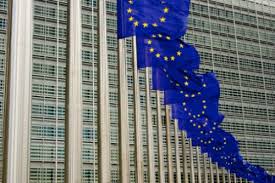
22/12/2021
L’ECOMUSEO DEL LITORALE ROMANO, INTITOLATO A MARIA PIA MELANDRI

 Azione cofinanziata dalla Commissione Europea
Azione cofinanziata dalla Commissione Europea The second pillar of Regulation n. 1305/2013 about European Agricultural Fund for Rural Development (FEASR) has given to Italy 10,43 billion euro for the period 2014-2020.
The second pillar of Regulation n. 1305/2013 about European Agricultural Fund for Rural Development (FEASR) has given to Italy 10,43 billion euro for the period 2014-2020.
Italian co financing will be added to European fundings.
Italian planning for Rural Development 2014-2020 is composed of 2 national plans (PSRN), 19 regional Plans (PSR) and 2 Plans of the Provinces of Trento and Bolzano.
One of the 2 National Plans is the National Plan for Rural Development which provides three measures:
• risk management
• animal biodiversity
• Irrigation infrastructures
The measure for irrigation infrastructures provides a financing of 300 millions euro for actions mainly devoted to improve the efficiency of existing infracstructures and the possible extension of irrigation on new surfaces, on condition to the possible water saving through a more efficient use of water. To the 300 millions euro should be added also money coming from Development and Cohesion Fund.
The expected actions are:
a) recover of efficiency of water storages
b) completion of irrigation schemes
c) water conveyance systems
d) adaptation of water delivery systems
e) control and measure systems
f) use of purified waste waters.
PSRN (National) finances investments for irrigation through sub-measure 4.3; PSR (Regional) can use the sub measure 4.3 and also sub measure 4.1.
In Italy irrigation is fundamental to secure the production and, often, the very existence of agricultural activity. Following this observation, our paper wants to stress all the difficulties our Country has to afford to make investments in irrigation.
Among quality productions, Italy has the greater number in European Union of products named “protected origin” (DOP) and “protected geographical indication” (IGT).The products above mentioned are 264 and there are also 900 more products named “guaranteed traditional specialities” (STG).
All these productions need irrigation and their role is very important also for economic/social development, as they produce in Italy an estimated value of 12 billion euro.
Moreover, we cant forget the environmental value of irrigation in many areas of our Country. Irrigation provides many services for the environment contributing also to maintain the typical landscapes that attracts so many tourists in our Country.
It is clear that modernizing and making more efficient irrigation systems can improve the competitiveness in our agrifood system. It is necessary that the implementation of Water Frame Directive could be also a chance to modernize our water management system. For this reason it should be appropriate to make strategic alliances with other Mediterranean Countries to agree about an interpretation of the Directive rules in a less tight way, more adaptable to the characteristic of the different territories. The review process of Water Directive, that whould start soon, can surely be important to make a proposal together with other Mediterranean countries.
Many problems must be solved inside our Country between Ministers and competent authorities on water resources. In particular, it is necessary that the Minister of Environment (MATTM) and the Minister of Agriculture (MIPAAF) agree on the definition of “adequate water cost recovery” considering the particularity of the agricultural sector, valuing also the environmental benefits (not only the costs) produced from irrigation and agriculture.
It is necessary a careful distinction between the normal use of water for agriculture and the situations of abuse of water.
It is also necessary to consider the possibility to use alternative solutions to volumetric rates that sometimes it is not possible to apply.
In this process also the world of agriculture must do its part operating on situations of inefficiency and supporting the diffusion of the best tecnologycal innovations with the task of improving firms competitiveness and new employment. A chance for this are surely the new programs for rural development that, more than in the past, are focused on the diffusion of technical and management innovations.
Fabrizio De Filippis and Raffaella Zucaro
This project has been funded with support from the European Commission. This publication [communication] reflects the views only of the author, and the Commission cannot be held responsible for any use which may be made of the information contained therein.

22/12/2021
L’ECOMUSEO DEL LITORALE ROMANO, INTITOLATO A MARIA PIA MELANDRI
.jpg)
22/12/2021
IMPIANTI IDRAULICI, LOCATION AMBITE

22/12/2021
NAVIGARE L’ARNO: TRAGUARDO SEMPRE PIU’ VICINO

22/12/2021
2° FORUM SVILUPPO SOSTENIBILE:A MILANO PRESENTATO PROGETTO ACQUAPLUSS